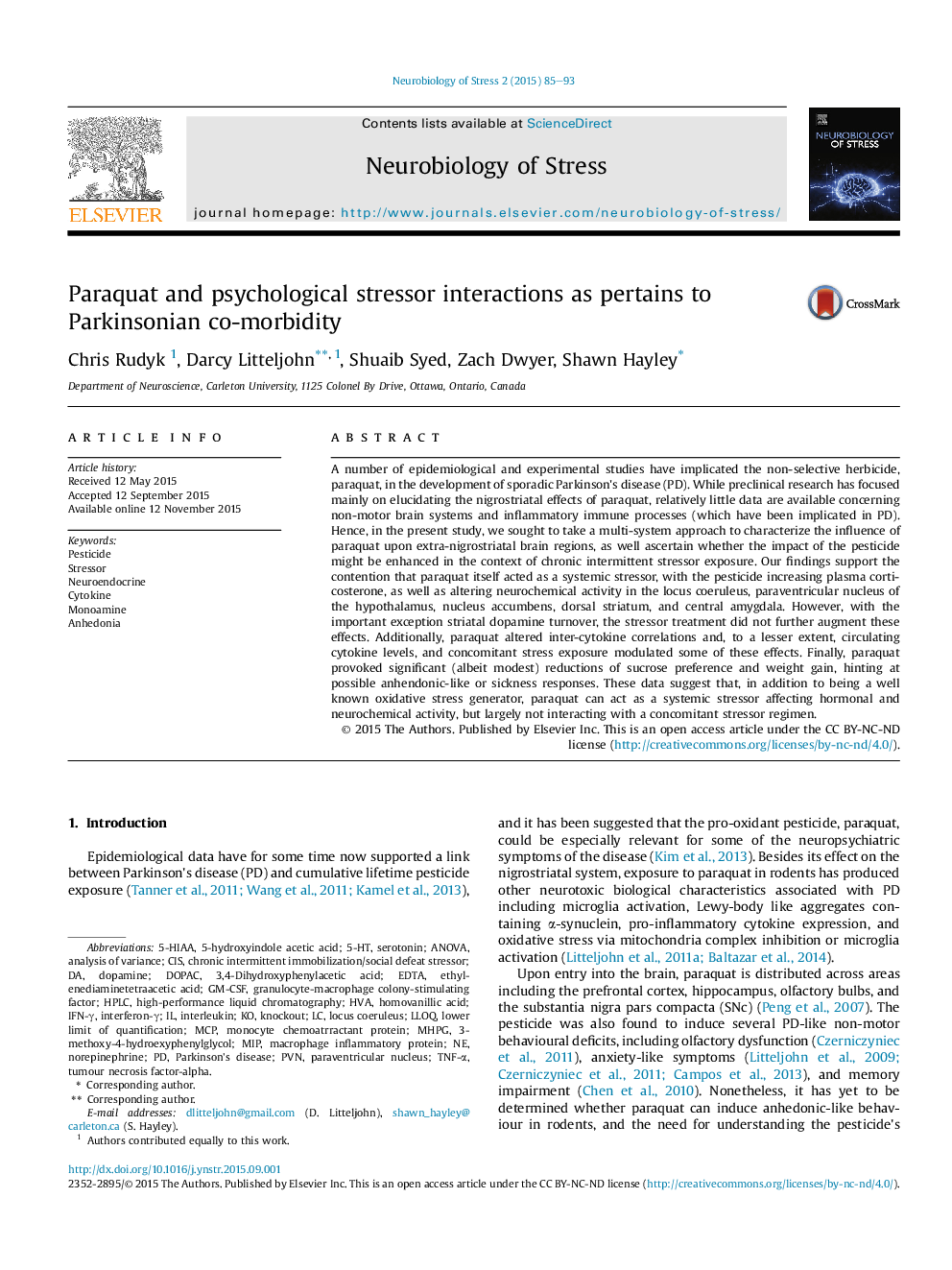| Article ID | Journal | Published Year | Pages | File Type |
|---|---|---|---|---|
| 4318540 | Neurobiology of Stress | 2015 | 9 Pages |
A number of epidemiological and experimental studies have implicated the non-selective herbicide, paraquat, in the development of sporadic Parkinson's disease (PD). While preclinical research has focused mainly on elucidating the nigrostriatal effects of paraquat, relatively little data are available concerning non-motor brain systems and inflammatory immune processes (which have been implicated in PD). Hence, in the present study, we sought to take a multi-system approach to characterize the influence of paraquat upon extra-nigrostriatal brain regions, as well ascertain whether the impact of the pesticide might be enhanced in the context of chronic intermittent stressor exposure. Our findings support the contention that paraquat itself acted as a systemic stressor, with the pesticide increasing plasma corticosterone, as well as altering neurochemical activity in the locus coeruleus, paraventricular nucleus of the hypothalamus, nucleus accumbens, dorsal striatum, and central amygdala. However, with the important exception striatal dopamine turnover, the stressor treatment did not further augment these effects. Additionally, paraquat altered inter-cytokine correlations and, to a lesser extent, circulating cytokine levels, and concomitant stress exposure modulated some of these effects. Finally, paraquat provoked significant (albeit modest) reductions of sucrose preference and weight gain, hinting at possible anhendonic-like or sickness responses. These data suggest that, in addition to being a well known oxidative stress generator, paraquat can act as a systemic stressor affecting hormonal and neurochemical activity, but largely not interacting with a concomitant stressor regimen.
